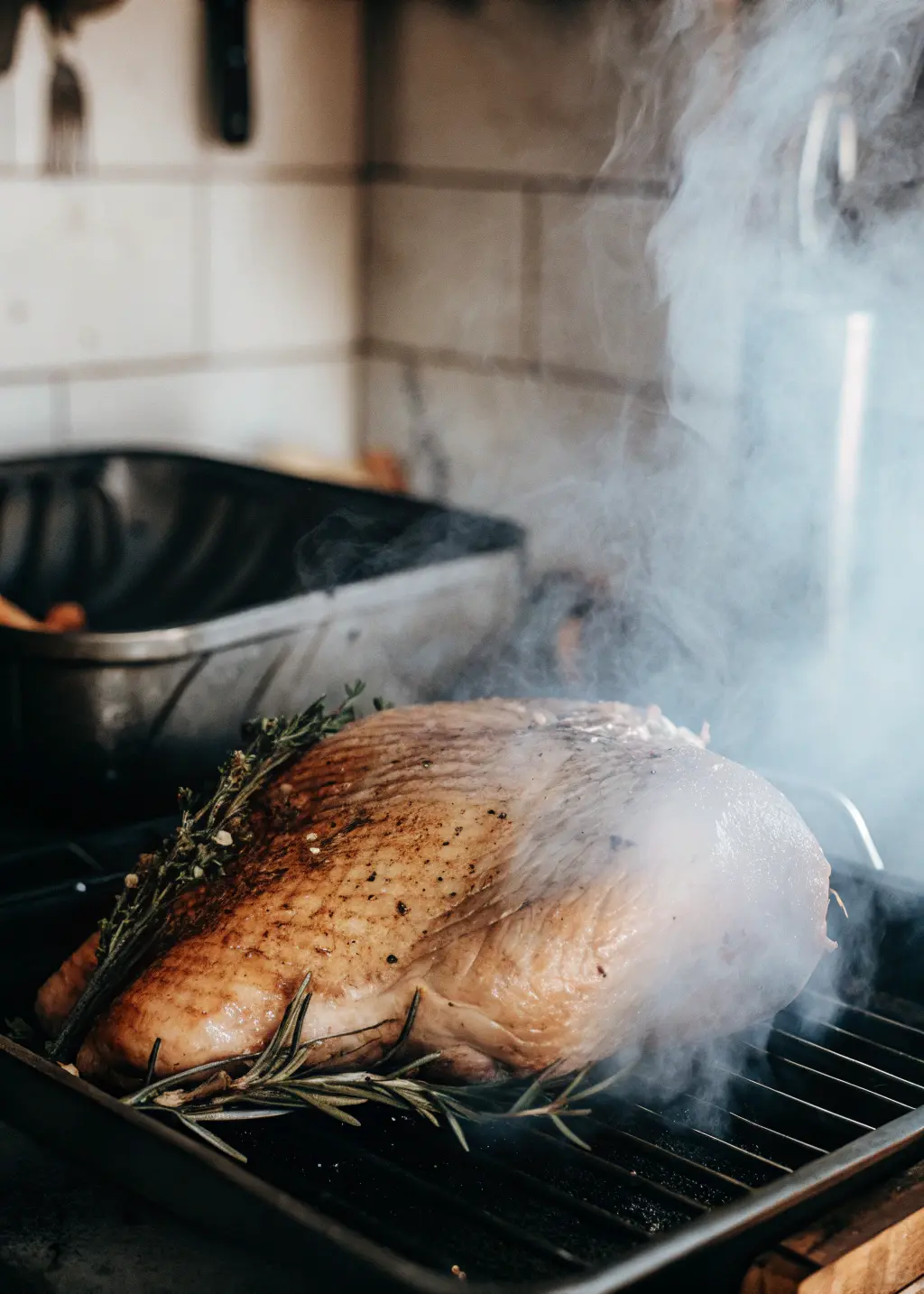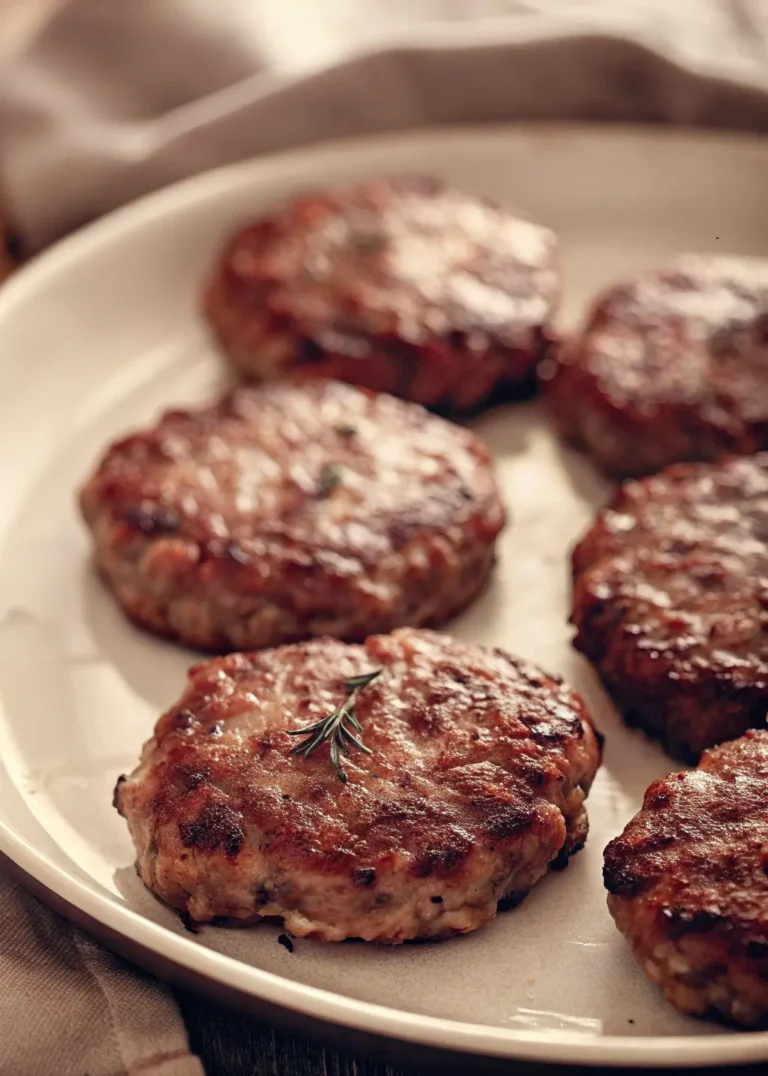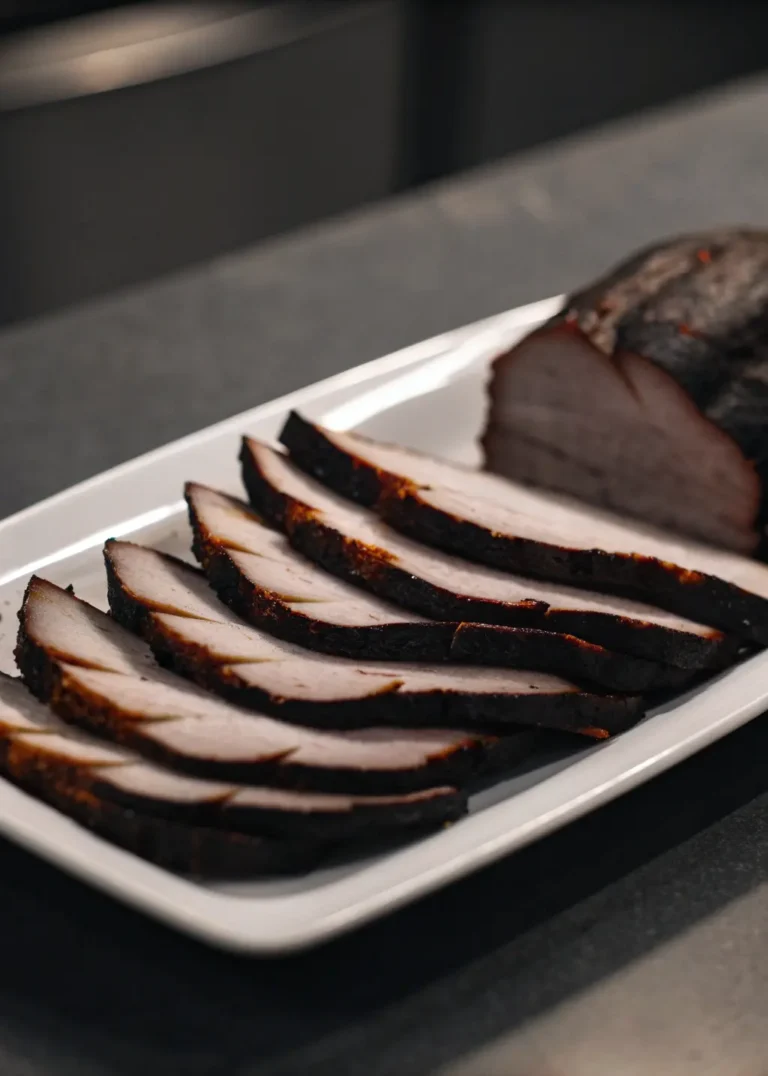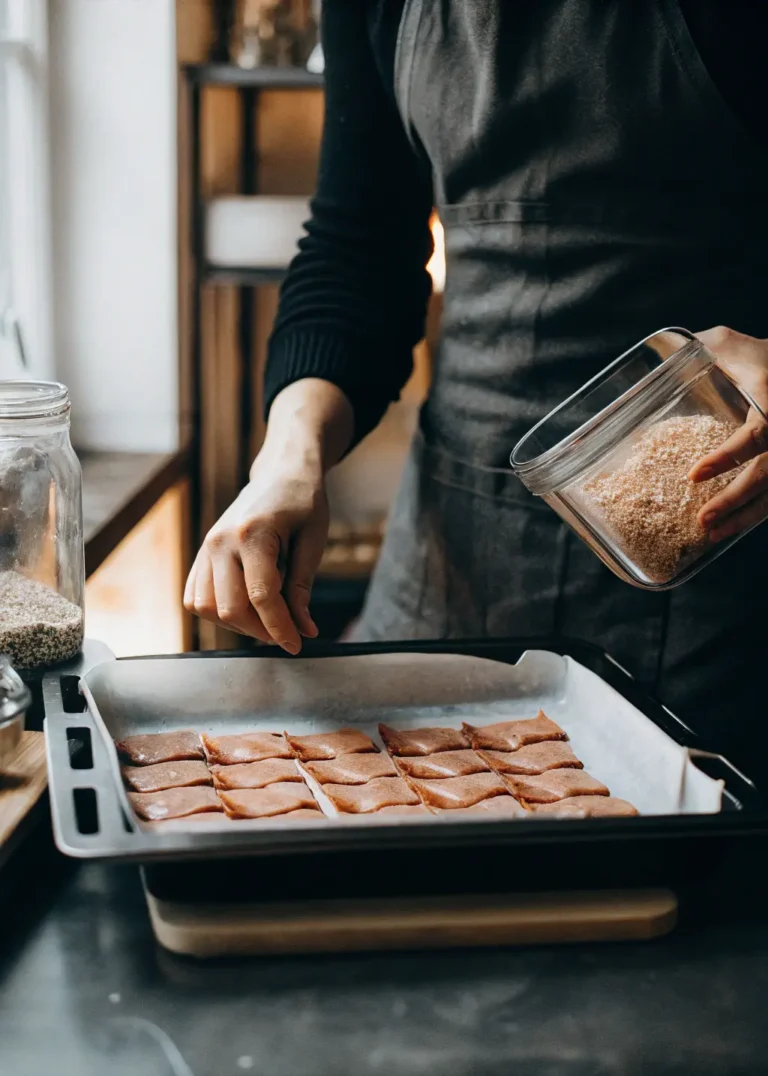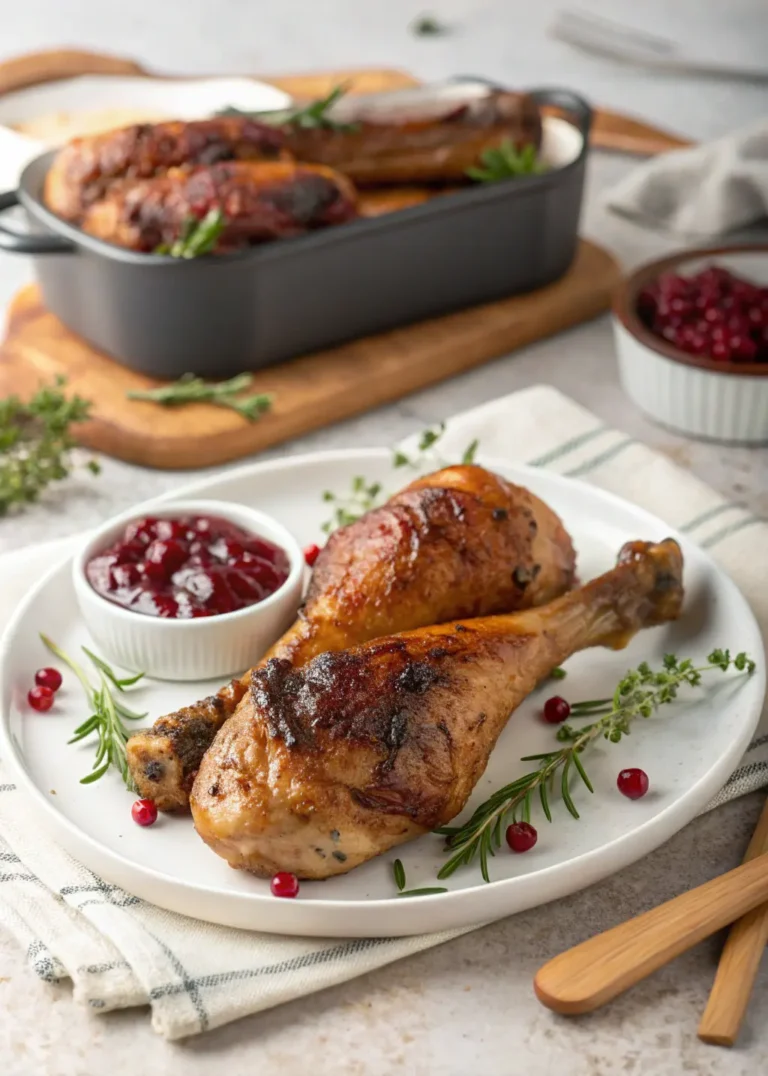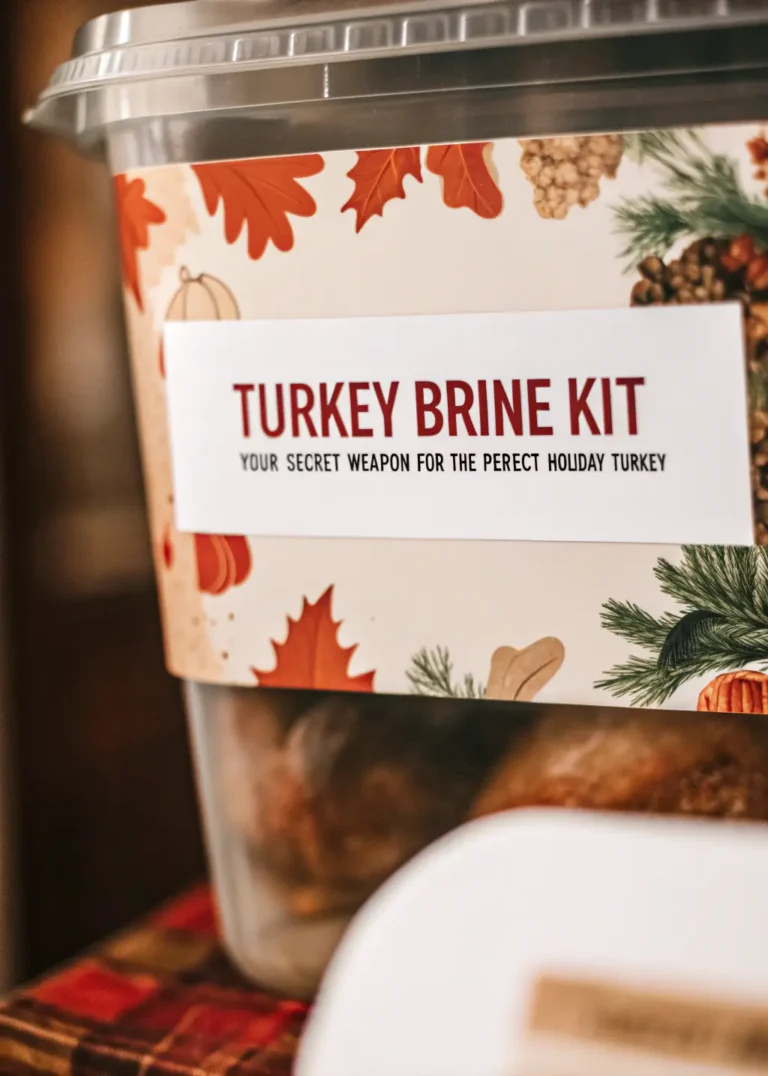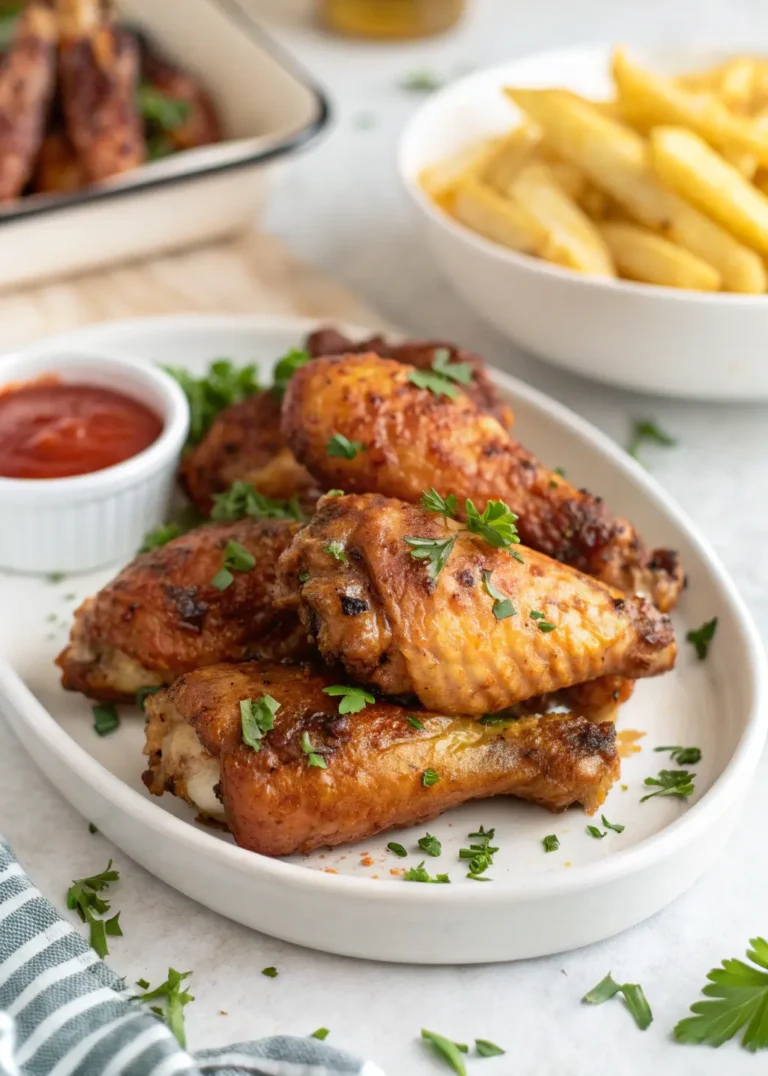Step-by-Step Recipe for Smoking the Perfect Turkey Breast: Your Complete Guide to BBQ Mastery
The first time I attempted smoking a turkey breast, I’ll admit—I was terrified. Standing in my backyard at 5 AM, watching thin wisps of smoke curl up from my smoker, I couldn’t shake the feeling that I was about to disappoint everyone gathered around my table later that day. Would the meat be dry? Would the smoke flavor be too overwhelming? Would I somehow manage to turn a beautiful piece of poultry into an expensive mistake?
But then something magical happened. After hours of careful tending, monitoring temperatures, and fighting the urge to peek too often, I pulled out what can only be described as a masterpiece. The skin was mahogany-brown and crackling, the meat pulled apart in perfect, juicy strands, and the smoky aroma had my neighbors peering over the fence with undisguised envy.
That moment taught me something profound: smoking the perfect turkey breast isn’t just about following a recipe—it’s about creating an experience that brings people together and makes memories that last long after the last bite. Whether you’re a complete beginner intimidated by the smoker in your garage or an experienced pitmaster looking to perfect your technique, this step-by-step guide will give you the confidence and knowledge to create your own backyard triumph.
Table of contents

Why Smoking Turkey Breast Creates Superior Flavor and Texture
When you choose to smoke your turkey breast instead of roasting it in the oven, you’re embarking on a culinary journey that transforms ordinary poultry into extraordinary dining. The low-and-slow smoking method operates at temperatures between 225-250°F, allowing connective tissues to break down gradually while preserving moisture throughout the meat.
This gentle cooking process creates multiple advantages over traditional methods. The extended cooking time allows smoke compounds to penetrate deep into the meat fibers, creating complex flavor layers that you simply cannot achieve with faster cooking techniques. Meanwhile, the consistent, indirect heat ensures even cooking from edge to center, eliminating the common problem of overcooked exterior meat surrounding undercooked interior portions.
The science behind smoking reveals why this method produces such exceptional results. Wood smoke contains hundreds of flavor compounds that bind to proteins and fats, creating that distinctive smoky taste we crave. Additionally, the low temperature prevents the rapid moisture loss that plagues high-heat cooking methods, resulting in turkey breast that remains juicy and tender throughout.
Essential Equipment for Smoking the Perfect Turkey Breast
Your equipment choices directly impact your smoking success, so understanding your options helps you make informed decisions. Different smoker types offer varying levels of temperature control, ease of use, and flavor development capabilities.
| Smoker Type | Temperature Control | Ease of Use | Flavor Quality | Cost Range |
|---|---|---|---|---|
| Electric | Excellent | Very Easy | Good | $150-$400 |
| Gas | Good | Easy | Good | $200-$600 |
| Charcoal | Moderate | Moderate | Excellent | $100-$500 |
| Pellet | Excellent | Easy | Excellent | $400-$1200 |
Beyond your smoker selection, certain tools prove indispensable for consistent results. A digital probe thermometer stands as your most crucial investment—internal temperature accuracy means the difference between perfectly cooked turkey and disappointment. Look for models with wireless capabilities that allow monitoring without opening your smoker door frequently.
Your wood selection significantly influences the final flavor profile. Apple and cherry woods provide mild, sweet notes that complement turkey beautifully, while oak offers a classic smoky backbone. Avoid overpowering woods like mesquite for turkey breast, as they can overwhelm the delicate poultry flavors.
Selecting and Preparing Your Turkey Breast for Smoking
Choosing the right turkey breast sets the foundation for your smoking success. Look for skin-on turkey breasts weighing between 3-8 pounds, as this size range ensures manageable cooking times while providing generous servings. Bone-in varieties typically offer better flavor and moisture retention compared to boneless options, though both work well with proper technique.
Fresh turkey breast generally delivers superior results compared to previously frozen options, but high-quality frozen turkey works excellently when properly thawed. Plan 24 hours of refrigerator thawing time for every 4-5 pounds of turkey breast weight.
Pre-Smoking Preparation Essentials
Proper preparation begins 24-48 hours before you light your smoker. Start by trimming any excess fat or loose skin that might prevent even cooking or smoke penetration. Score the skin in a crosshatch pattern, cutting about ¼-inch deep to help seasonings penetrate while promoting better browning.
Room temperature timing matters more than many realize. Remove your turkey breast from refrigeration 30-60 minutes before smoking, allowing it to lose its chill for more even initial cooking. However, never leave poultry at room temperature longer than two hours for food safety reasons.
The Science of Brining for Smoking the Perfect Turkey Breast
Brining transforms good smoked turkey into exceptional smoked turkey by altering the meat’s protein structure to retain more moisture during cooking. This saltwater solution penetrates the muscle fibers, breaking down proteins while infusing flavor throughout the meat.
Master Wet Brine Recipe
| Ingredient | Amount (4-6 lb breast) | Purpose | Notes |
|---|---|---|---|
| Water | 1 gallon | Base liquid | Use filtered water |
| Kosher Salt | ¾ cup | Moisture retention | Don’t substitute table salt |
| Brown Sugar | ½ cup | Flavor balance | Aids browning |
| Apple Cider Vinegar | ¼ cup | Tenderization | Enhances smoke absorption |
| Bay Leaves | 4 leaves | Aromatic complexity | Remove before smoking |
| Garlic Cloves | 6 cloves, crushed | Flavor depth | Fresh only |
| Black Peppercorns | 2 tbsp | Spice undertones | Whole peppercorns |
| Fresh Thyme | 4 sprigs | Herbal notes | Pat dry before smoking |
Submerge your turkey breast completely in this brine solution for 12-24 hours. The salt concentration draws out natural juices initially, then reverses the process, pulling the seasoned brine into the meat fibers. This process increases the meat’s capacity to hold moisture during the long smoking process.
For those preferring simpler preparation, dry brining offers excellent results with less fuss. Rub 1 tablespoon of kosher salt per pound directly onto the turkey skin, then refrigerate uncovered for 24-48 hours. This method concentrates flavors while drawing out surface moisture for crispier skin development.
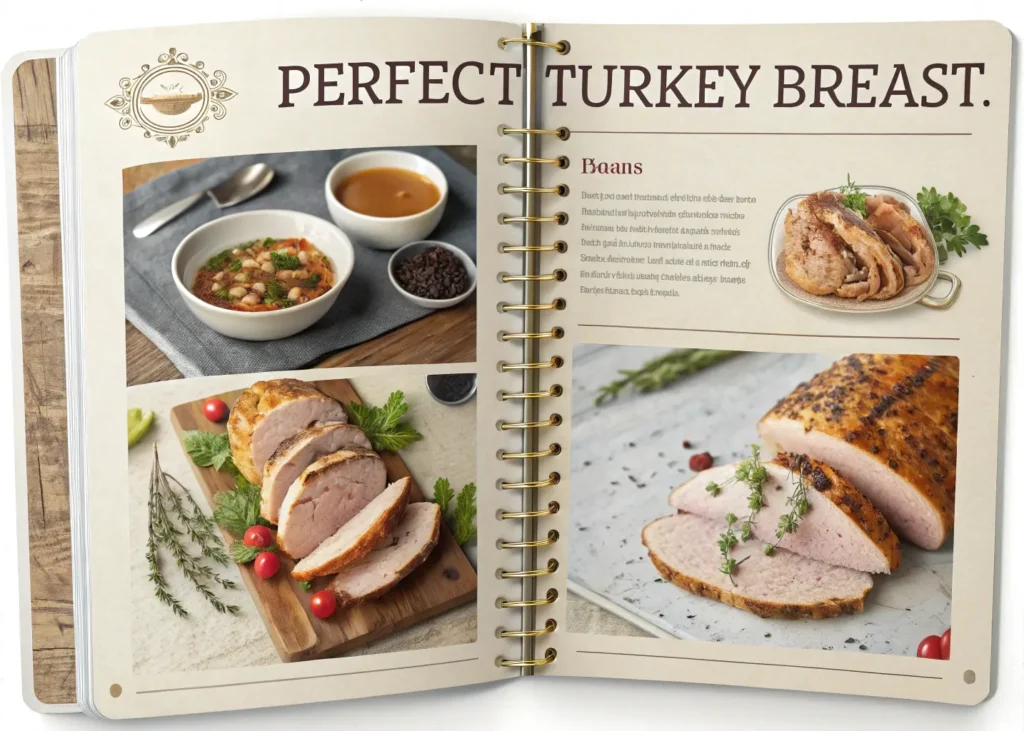
Wood Selection Guide for Optimal Flavor
Your wood choice profoundly impacts the final flavor profile of your smoked turkey breast. Understanding different wood characteristics helps you create the exact taste experience you desire.
| Wood Type | Flavor Profile | Intensity | Best Paired With | Burn Time |
|---|---|---|---|---|
| Apple | Sweet, mild | Light | First-time smokers | 2-3 hours |
| Cherry | Sweet, fruity | Light-Medium | Holiday preparations | 2-3 hours |
| Hickory | Strong, bacon-like | Heavy | Bold seasoning | 3-4 hours |
| Oak | Mild, smoky | Medium | Classic BBQ flavor | 4-5 hours |
| Pecan | Nutty, sweet | Medium | Southern-style smoking | 3-4 hours |
Apple wood remains the gold standard for turkey breast smoking, providing gentle sweetness that enhances rather than masks the natural poultry flavors. Cherry wood adds beautiful color development while contributing subtle fruity undertones. Many experienced smokers combine apple and cherry for complexity without overwhelming the meat.
Avoid soaking your wood chips or chunks, despite common misconceptions. Wet wood creates steam rather than smoke, delaying the combustion process that produces the flavor compounds you want. Dry wood ignites properly and maintains consistent smoke production throughout your cooking session.
Step-by-Step Smoking Process for Perfect Results
Pre-Smoking Setup and Temperature Control
Begin your smoking session by preheating your smoker 30-45 minutes before adding your turkey breast. Target temperature should stabilize between 225-250°F, with 235°F representing the sweet spot for most turkey breast sizes. This temperature range ensures thorough cooking without drying out the meat.
Position your water pan according to your smoker’s design, filling it with hot water to accelerate the humidity buildup that helps maintain moisture. Add your initial wood load—2-3 chunks for charcoal smokers or 1-2 cups of chips for gas units. Remember that turkey breast requires subtle smoke flavor, so resist the urge to overload with wood.
The Complete Smoking Timeline
Your smoking timeline depends on turkey breast size, but plan approximately 1.5 hours per pound at 235°F. Here’s what each phase should look like:
Hours 1-2: Initial Smoke Development During this crucial period, your turkey breast absorbs the most smoke flavor. Maintain steady temperature and resist opening the smoker door. The skin should begin developing a golden color, and you’ll notice the distinctive smoky aroma intensifying.
Hours 3-4: Color Development The turkey breast skin transforms from golden to deeper amber during this phase. If using a spray bottle, you can begin light spritzing with apple juice every 2 hours, though this isn’t strictly necessary with properly brined meat.
Hours 5-6: Final Cooking Phase Monitor internal temperature closely during this final stretch. Your probe thermometer should show steady temperature increases toward the target 165°F. Avoid the temptation to increase smoker temperature to speed cooking—patience ensures superior results.
Temperature Monitoring and Safety Guidelines
Internal temperature accuracy determines both food safety and eating quality. Insert your probe thermometer into the thickest part of the breast, avoiding contact with bones that can give false readings. The USDA requires 165°F throughout for food safety, but checking multiple spots ensures even cooking.
| Turkey Part | Target Temp | Probe Placement | Safety Notes |
|---|---|---|---|
| Thickest Breast Area | 165°F | Center, avoiding bone | Primary check point |
| Near Cavity | 165°F | Deepest insertion | Secondary verification |
| Multiple Spots | 165°F | Various locations | Ensure even cooking |
Remember that carryover cooking continues raising internal temperature after removal from heat. Many experienced pitmasters remove turkey breast at 160°F, allowing the final 5-degree increase during resting.
Advanced Techniques for Perfect Bark Development
Creating exceptional bark—that flavorful, textured exterior crust—requires understanding the interaction between seasoning, smoke, and heat. Your dry rub application timing significantly impacts bark formation, with overnight application providing the best penetration and adhesion.
Championship-Style Dry Rub Recipe
| Spice | Amount | Purpose | Flavor Notes |
|---|---|---|---|
| Paprika | 3 tbsp | Color, mild heat | Sweet or smoked variety |
| Brown Sugar | 2 tbsp | Caramelization | Balances salt |
| Kosher Salt | 2 tbsp | Seasoning base | Coarse grain preferred |
| Garlic Powder | 1 tbsp | Savory depth | Not garlic salt |
| Onion Powder | 1 tbsp | Umami complexity | Fine powder |
| Black Pepper | 1 tbsp | Heat, aroma | Freshly ground |
| Cayenne | 1 tsp | Heat level | Adjust to taste |
| Dried Thyme | 1 tsp | Herbal balance | Crush before use |
Apply this rub generously 12-24 hours before smoking, working it under the skin when possible for maximum flavor penetration. The sugar content aids in browning reactions, while the salt draws out surface moisture that could prevent proper bark formation.
Troubleshooting Common Smoking Challenges
Even experienced smokers encounter occasional challenges. Understanding these common issues and their solutions prevents disappointment and builds your troubleshooting skills.
Preventing Dry Turkey Breast
Dry turkey results from several potential causes, but overcooking remains the primary culprit. Monitor internal temperature religiously rather than relying solely on cooking times, as variables like outdoor temperature, wind, and starting meat temperature all affect cooking duration.
Inadequate brining also contributes to dryness. If you’ve skipped brining, consider injecting your turkey breast with a simple solution of chicken broth and melted butter before smoking. This emergency measure won’t equal proper brining but provides additional moisture insurance.
Managing Temperature Fluctuations
Weather conditions significantly impact smoker performance. Wind increases fuel consumption and creates temperature swings, while cold weather extends cooking times considerably. Position your smoker in a sheltered location when possible, and have extra fuel available during challenging weather conditions.
Learn your smoker’s personality through experience. Each unit responds differently to damper adjustments and fuel additions. Keep detailed notes during your first few smoking sessions to build a reference for future cooks.

Food Safety and Storage Guidelines
Food safety with smoked poultry demands strict attention to temperature control and timing. The USDA’s danger zone between 40-140°F supports rapid bacterial growth, so minimize time spent in this range during cooking and cooling.
Your smoked turkey breast should reach 165°F within 6-8 hours of cooking time. If cooking extends beyond this timeframe due to equipment issues or weather challenges, consider finishing in a conventional oven to ensure food safety.
Store leftover smoked turkey breast in refrigeration within 2 hours of cooking completion. Properly stored smoked turkey maintains quality for 3-4 days refrigerated or 2-3 months frozen. When reheating, add moisture with chicken broth to prevent drying.
Carving and Serving Your Masterpiece
Proper resting allows your smoked turkey breast to redistribute its juices evenly throughout the meat. Plan 20-30 minutes of resting time, loosely tented with foil to maintain warmth while preventing steam buildup that could soften crispy skin.
Sharp knives make carving effortless and safe. Slice against the grain in consistent ¼-inch portions for optimal tenderness and visual appeal. Start from one end and work methodically across the breast, maintaining steady pressure for uniform slices.
Arrange your carved turkey on a warmed platter, reserving any accumulated juices for drizzling just before service. The beautiful mahogany color and aromatic smoke should create an impressive presentation that builds anticipation for that first perfect bite.
Your Journey to Smoking Mastery
Smoking the perfect turkey breast isn’t just about following temperatures and timelines—it’s about embracing a time-honored tradition that transforms simple ingredients into something extraordinary. Every step, from selecting your turkey to that final satisfying slice, builds toward a moment of pure culinary achievement that connects you to generations of pitmasters who understood that great barbecue can’t be rushed.
The techniques you’ve learned here will serve you well beyond turkey breast. The patience, attention to detail, and understanding of smoke and heat that you develop will elevate every protein you put in your smoker. Remember, even experienced pitmasters had their first anxious morning standing beside a smoker, wondering if they were doing everything right.
Ready to create your own smoking success story? Start by selecting a quality turkey breast this weekend, gather your wood and seasonings, and put these proven techniques into practice. Your first perfectly smoked turkey breast awaits, and with it, the satisfaction of mastering one of barbecue’s most rewarding challenges. The only question remaining is: will you be ready for the compliments and requests for your secret when your family and friends experience what true smoked turkey perfection tastes like?
Have you given our recipe a try?
There are no reviews yet. Be the first one to write one.

